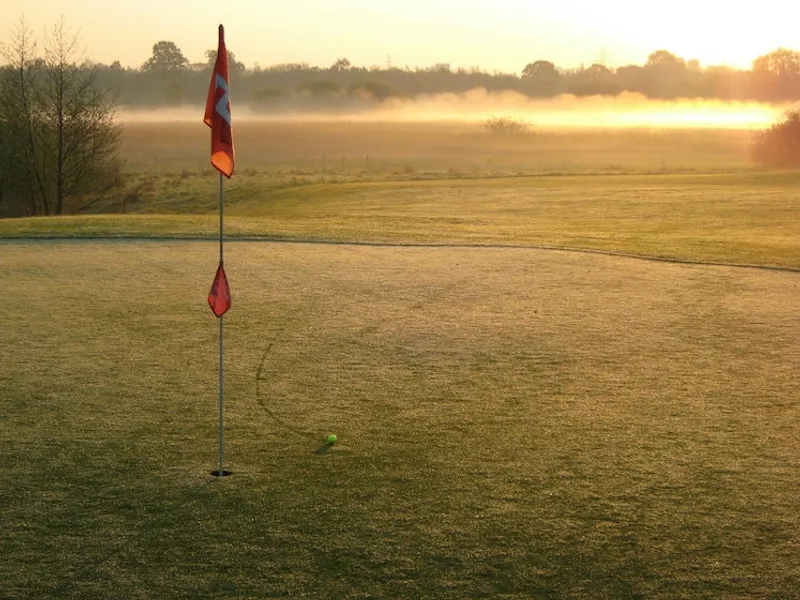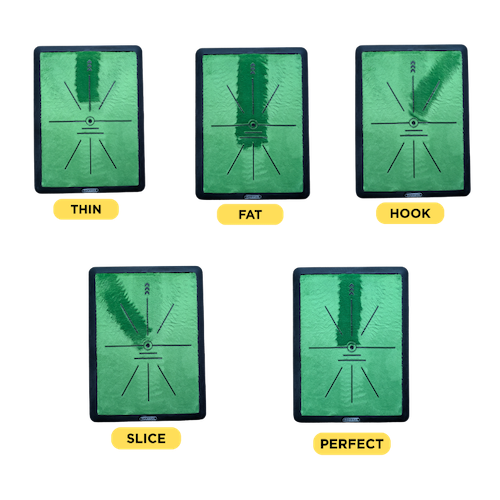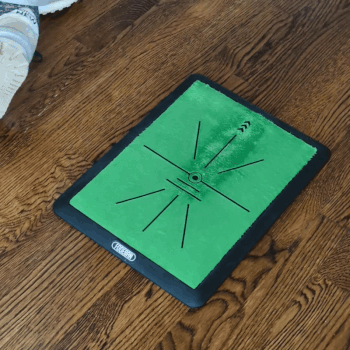How to Fix Your Slice - What Really Works
The dreaded slice is the product of an open clubface at impact paired with an out-to-in swing path, causing a ball flight that starts left of target before turning sharply right...

The dreaded slice is the product of an open clubface at impact paired with an out-to-in swing path, causing a ball flight that starts left of target before turning sharply right...
The dreaded slice is the product of an open clubface at impact paired with an out-to-in swing path, causing a ball flight that starts left of target before turning sharply right. The result isn’t just a missed fairway; it’s often a costly recovery shot from the trees, deep rough, or worse.
This guide is designed to help you tackle the slice with clear, step-by-step advice. You’ll find practical tips to adjust your swing and grip for lasting improvement, along with easy on-the-spot corrections when you’re out on the course. With just a few simple changes, you can keep more shots in the fairway, avoiding sub-optional positions.
A slice happens when the clubface is open relative to the swing path at impact. Even a slight misalignment between clubface and path adds sidespin to the ball and sends it curving away from your target. By focusing on making the face square (or slightly closed) and guiding the club along a more neutral or inside-to-out path, you encourage a straighter, more controlled flight.
Think of it like trying to close a slightly crooked door—if the hinges aren’t aligned, the door sticks or swings awkwardly. In the same way, when the clubface isn’t square at impact, the resulting shot drifts off course. Fortunately, fine-tuning your grip and your swing path can solve this issue without diving too deeply into technical complexities.
Struggling with thins, fats, slices—or just can’t tell what’s going wrong?
This swing mat shows you exactly how your club strikes the ball, giving instant visual feedback after every shot. With just a few swings, you’ll start spotting mistakes in your swing path that are otherwise invisible.

It’s a quick, low-hassle way to connect what you feel in your body with what’s really happening at impact.
Use it indoors or out, no ball required—just swing and learn. It’s one of the fastest ways to improve your swing right from home.
Your grip is the foundation of every shot, especially when trying to eliminate a slice. Positioning your lead hand in the fingers, rather than flat against the palm, helps you maintain better control over the clubface. At address, cradle the handle comfortably in the base of your lead-hand fingers and let your thumb rest on top of the grip so it can guide a natural roll during the swing. Practicing in front of a mirror can build awareness of exactly how the club sits in your hands, and slow, methodical practice swings will help this new feel become second nature.
Placing the club more in your fingers encourages a smoother release through impact, preventing the face from lingering open as you strike the ball. This simple tweak can be surprisingly powerful because every other piece of your swing relies on whether your hands can move freely and rotate the clubface correctly.
Setting up properly and swinging the club along the correct path are essential steps toward eliminating a slice. Align your feet, hips, and shoulders parallel to the target line so that you begin each swing from a squared position. If you struggle with consistent alignment, consider placing a club or alignment stick on the ground at the range. Checking your posture and orientation before each shot forms a routine that keeps your clubface in a better position for impact.
A smooth inside-to-out swing path also encourages the ball to fly straighter. Instead of taking the club too far outside on the way back, focus on letting your arms and shoulders work together so the clubhead travels slightly inside the target line. This motion naturally promotes proper hand rotation, closing the face at the moment of contact. Slow-motion drills that emphasize a rhythmic shoulder turn can help, as can setting a visual marker on the ground to show where the clubhead should travel during practice sessions.
The Sand Save
Sponsored

When you notice your shots starting to flare right (for right-handed golfers), a small aim adjustment can be a quick solution. Position the clubface a bit left of your intended target to counteract the curve and guide the ball closer to where you want it to go. This compensation is not a permanent solution, but it helps you keep control over your round without making large mechanical changes in the middle of the round.
Making a slight revision to your swing tempo can lessen a slice when you’re on the course. Relax your grip pressure so your hands don’t lock up, and keep your backswing on the shorter side to promote better control. These subtle modifications allow the clubface to square up more efficiently, giving you a temporary correction while you continue to hone your fundamentals in practice. Small adjustments to aim or swing speed can keep a lingering slice at bay and help you stay composed during a round.
The path to eliminating a slice begins with a stable, finger-based grip and a deliberate swing path that brings the clubface to square at impact. Building these fundamentals will lay the groundwork for straighter, more predictable shots.
If you do struggle with the occasional slice while on the course, minor adjustments to aim or tempo can keep your shots in play. Over time, your consistent grip and refined swing mechanics will transform today’s quick fixes into tomorrow’s dependable, slice-free game.
Golf can initially seem like a maze of complex movements and etiquette, but honing your swing is one of the most direct ways to gain confidence on the course. This guide aims to help...
getting-started05-01-2025
Golf is often celebrated for its blend of patience, precision, and technique. Nowhere is that delicate balance more evident than in the swing itself. A well-executed swing sends the ball soaring toward the target with consistency and power, while a f...
getting-started05-12-2024
The ability to control the trajectory of your shot—deciding between a draw or a fade—can transform your game, turning obstacles into opportunities and adding a new dimension to your play. Understanding these two techniques isn't just about skill...
instruction10-01-2025
Golfers everywhere know the feeling of approaching a green and worrying about a chunky or bladed chip that adds unnecessary strokes to the scorecard. A shaky short game can derail even the most consistent rounds. Fortunately, a few targeted adjustmen...
instruction06-08-2024
A pitch shot in golf relies on precision and touch rather than brute strength. By using a short, controlled swing and a setup often referred to as “center, center, center”—where the ball, stance, and contact point align at the center—you create the f...
instruction08-11-2024